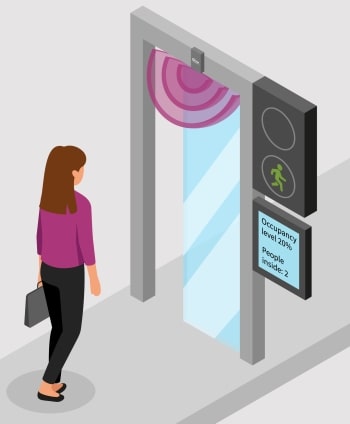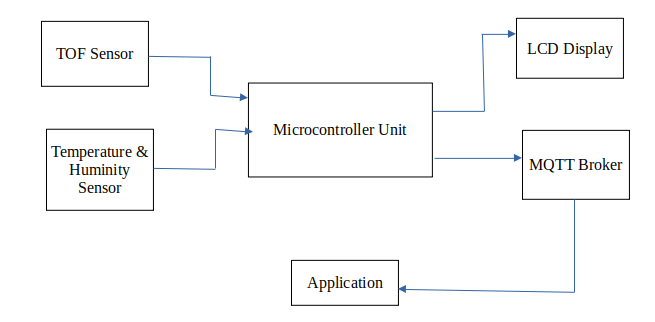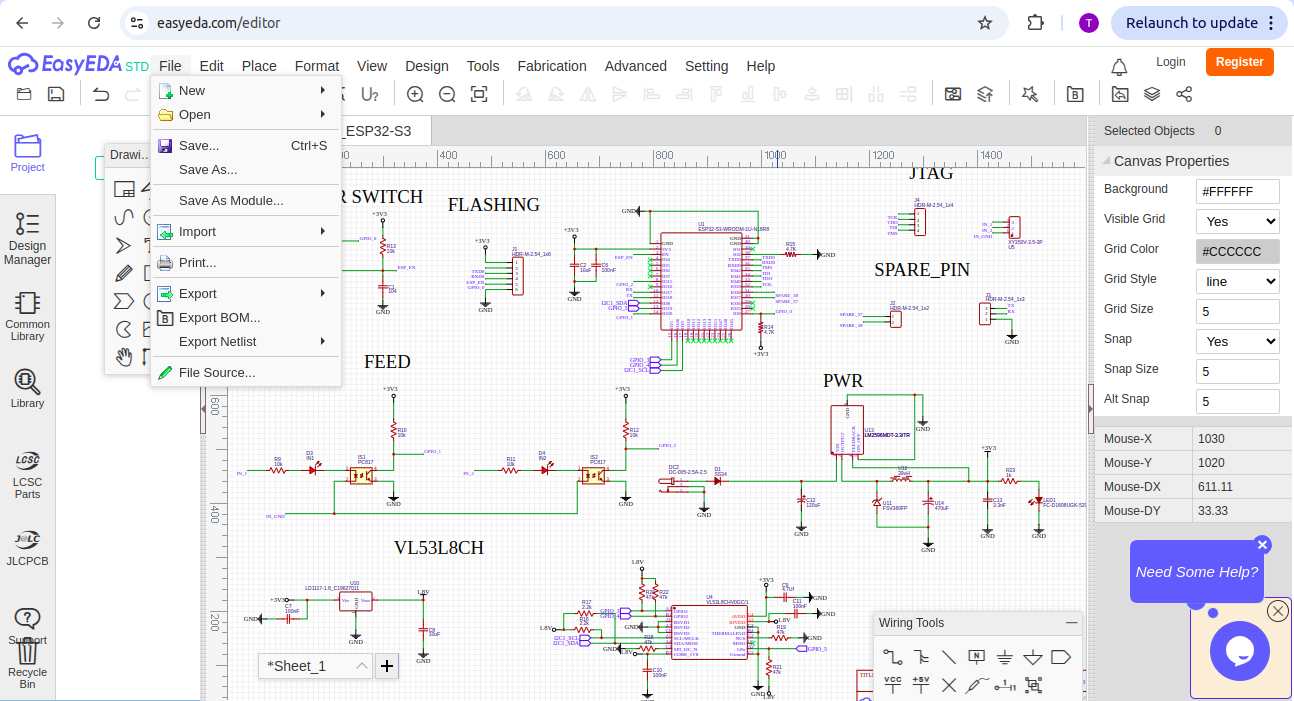Final Project - Room Watch
Project Overview
RoomWatch is an intelligent entry and exit monitoring system designed to track the number of people inside a room in real time. Using sensor-based detection, it accurately identifies when a person enters or exits and updates the total occupancy count. The system operates efficiently with minimal power consumption and can transmit data wirelessly for remote monitoring. RoomWatch is ideal for applications in offices, libraries, labs, and smart buildings, enhancing security and resource management. Additionally, it features a real-time display of the current room temperature and time, providing valuable environmental data along with occupancy tracking.
Project Goals
- Develop a smart monitoring system for rooms.
- Utilize sensors to measure temperature, humidity, and motion.
- Implement IoT for real-time data transmission and alerts.
- Ensure power efficiency and long-term usability.
Key Features

- Real-Time Person Tracking: Detects entry and exit movements instantly and updates the occupancy count.
- Accurate Counting Algorithm: Uses sensor-based logic to minimize errors in counting people.
- Wireless Data Transmission: Sends occupancy data via Wi-Fi or Bluetooth for remote monitoring.
- Compact and Efficient Design: Designed for easy installation with minimal hardware requirements.
- Low Power Consumption: Optimized for energy efficiency, making it suitable for battery-powered applications.
- LCD/Remote Display: Shows the live count on an LCD screen or web dashboard for quick access.
- Versatile Applications: Useful in offices, libraries, labs, smart buildings, and security monitoring.
System Architecture

Working
RoomWatch operates using sensor-based entry and exit detection to keep track of the number of people inside a room. The system follows these steps: Sensor Detection – Infrared or ultrasonic sensors are placed at the entrance to detect movement. When a person crosses the sensors, the system identifies whether they are entering or exiting. Data Processing – The microcontroller (ESP32) processes sensor inputs and determines the direction of movement, updating the total person count accordingly. Real-Time Count Update – The updated occupancy count is displayed on an LCD screen or transmitted wirelessly to a web dashboard or mobile app. Wireless Communication (Optional) – The system can send data via Wi-Fi or Bluetooth for remote monitoring, making it accessible from anywhere. Low Power Operation – Designed to consume minimal power, ensuring long-term operation with battery or direct power supply.
Applications
- Office and Workspace Management.
- Library and Study Room Monitoring.
- Event Crowd Management.
- Smart Home and Building Automation.
- Laboratories and Research Facilities.
- Retail Stores and Shopping Malls.
- Healthcare Facilities.
- System Architecture
Future Enhancements
Going forward, I aim to refine the system by adding machine learning algorithms to predict room usage patterns and optimize energy consumption.
My final project was developed by integrating multiple Fab Academy assignments, including embedded programming, electronics design, and electronics production. Through the electronics design assignment, I created a custom PCB tailored for my project requirements. The electronics production assignment helped me fabricate and assemble the board using milling and soldering techniques. With embedded programming, I wrote and tested the firmware, ensuring seamless communication between the sensors and cloud integration. These assignments provided the foundation for my project, allowing me to develop a fully functional prototype that collects real-time data and displays insights on a web application.
In this project, the ESP32 microcontroller is selected due to its powerful dual-core processor, low power consumption, and built-in Wi-Fi and Bluetooth capabilities. These features make it well-suited for real-time data processing and seamless wireless communication, enabling efficient integration with cloud platforms or IoT systems for monitoring and automation.
The Time-of-Flight (ToF) sensor is chosen for its precise distance measurement capabilities using infrared laser technology. Unlike traditional motion sensors, ToF sensors provide accurate and fast detection of objects by measuring the time taken for light to reflect off a surface. This allows for reliable differentiation between entry and exit movements, ensuring accurate tracking of a person's status.
Reference Link
VL53L8CHAlong with completing the Fab Academy assignments, I have also successfully designed the circuit for my final project using EasyEDA. Additionally, I have generated the Bill of Materials (BOM) required for the project.
Schematic Diagram
 Click Here - Schematic Diagram
Click Here - Schematic DiagramBOM
Click Here - BOM← Back to Home Page